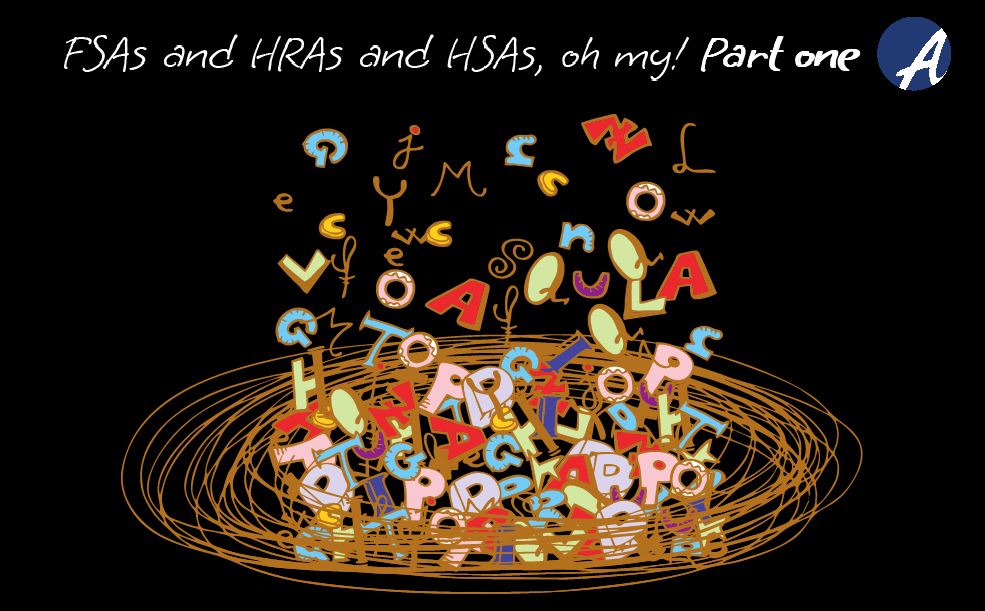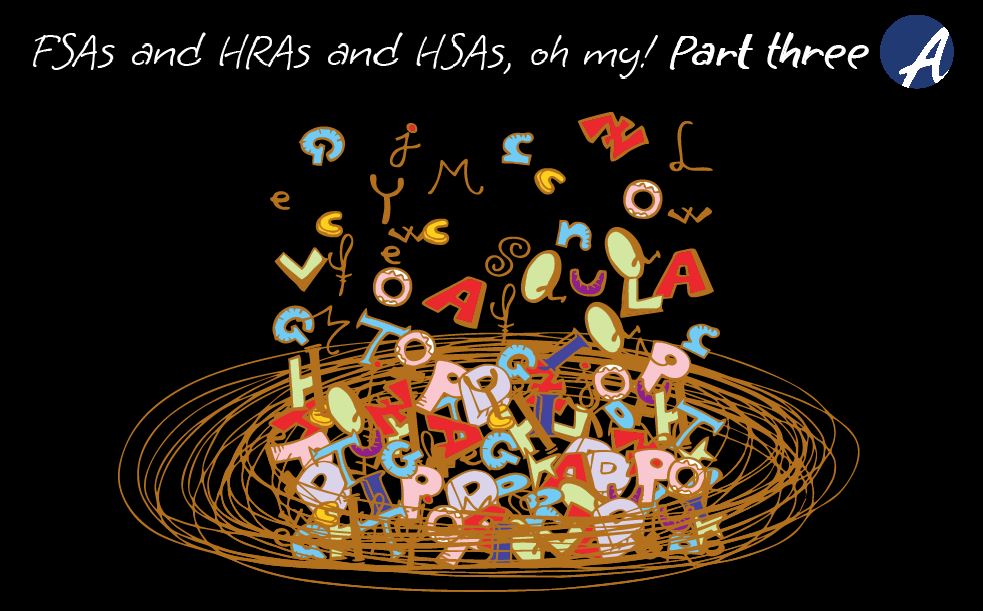2 min read
FSAs and HRAs and HSAs, oh my! Part two
As group health insurance premiums tick ever upward, firms of all sizes are seeking to lower costs. Consumer driven health (CDH) accounts, the...

As group health insurance premiums tick ever upward, firms of all sizes are seeking to lower costs. Consumer driven health (CDH) accounts, the general name for various accounts that allow employers and employees to save and spend some healthcare dollars as they see fit, may be part of your solution. In this three part series, we’ll explore how flexible spending accounts, health reimbursement arrangements and health savings accounts may be paired with group health benefits – and what aspects of each CDH account might be appealing to your employer groups.
FSAs allow employees to set aside pre-tax money to pay for qualified medical expenses. However, because these accounts typically do not roll over year-to-year, they are best suited for paying for current expenses, but more on that later. The lack of rollover prevents FSAs from acting as savings vehicles.
Financial flexibility
FSAs provide an opportunity to offset out-of-pocket costs associated with their healthcare plan – deductibles, copays and coinsurance payments can all be paid for with these funds. But that’s not all. These funds may be put toward other uses not covered by a health plan, including orthodontics, sunscreen and family planning items. So long as your group insurance carrier allows it, FSAs may be paired with any group health plan, allowing users a bit more flexibility in paying for their care.
Tax advantages
Like all CDH accounts, FSAs are tax-advantaged. For 2025, employees may contribute up to $3,300 pre-tax dollars toward these accounts. And so long as funds are used to pay for a qualifying expense, withdrawals are also untaxed. These accounts have both the potential to place employees in a lower tax bracket while empowering them to spend on healthcare needs that are most important to them.
Risk management for employers and employees
Although FSAs are technically funded by employees, employers can make the full annual contribution amount available at the start of each plan year. Over time, the employee reimburses the employer via payroll deductions. This arrangement grants employees the freedom to spend the money as they see fit from day one, permitting them to prioritize care and products according to need. While this may seem risky for employers – there is no legal mechanism to recoup any spent funds if an employee resigns on the second day of the plan year, for example – but the risk is offset by employees that do not spend their FSA funds within the plan year.
Since FSAs are employer-owned, employers have a key decision to make regarding any unused funds at the end of each plan year. There are three options to consider:
These options are mutually exclusive: an employer may only choose one rule and apply it uniformly to all FSA-eligible employees.
FSAs represent an additional benefit that can be used to attract and retain talent. It’s a defined benefit – employers can budget for exactly how much they’d like to contribute to each employee for each plan year, meaning there’s no variability in this line item. Coupled with the tax-advantaged status, FSAs can present an interesting benefit option to employers of all sizes.
Not sure if an FSA, HRA or HSA is the best fit for your group? Let’s chat info@actionbenefits.com.
Read more: Part two
Read more: Part three

2 min read
As group health insurance premiums tick ever upward, firms of all sizes are seeking to lower costs. Consumer driven health (CDH) accounts, the...

3 min read
As group health insurance premiums tick ever upward, firms of all sizes are seeking to lower costs. Consumer driven health (CDH) accounts, the...
.png)
3 min read
So you get your client onboarded. He has his card, his summary of benefits--He is thrilled with his coverage. He even emailed a nice thank you note....